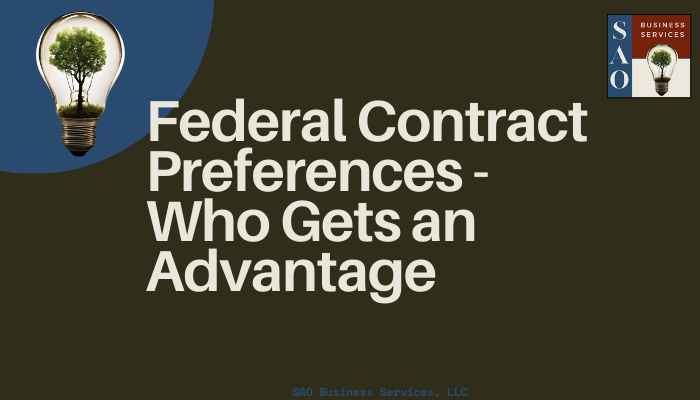Winning a federal contract can be a game-changer for any organization, but the competition can be fierce. However, some businesses have a built-in advantage thanks to federal contract preferences. These programs aim to promote specific social and economic goals by giving qualifying organizations a leg up in the bidding process.
So, who exactly gets this preferential treatment? Here’s a breakdown of the key beneficiaries:
1. Small Businesses: The cornerstone of many preference programs, small businesses receive priority consideration for numerous contracts below a certain dollar threshold. This helps level the playing field against larger competitors.
2. Small Disadvantaged Businesses (SDBs): Defined as small businesses owned and controlled by socially and economically disadvantaged individuals, SDBs receive even stronger preference compared to regular small businesses. They can compete for a designated percentage of federal contracting dollars across various industries.
3. Service-Disabled Veteran-Owned Small Businesses (SDVOSBs): These businesses, owned and controlled by veterans with service-connected disabilities, have similar preferences to SDBs, enjoying exclusive access to certain contracts and priority consideration for others.
4. Veteran-Owned Small Businesses (VOSBs): While not enjoying the same level of preference as SDVOSBs, VOSBs still receive priority consideration for a portion of federal contracts, recognizing the contributions of veterans to the economy.
5. HUBZone Businesses: Located in Historically Underutilized Business Zones (HUBZones), these businesses operating in economically disadvantaged areas receive preferences for contracts performed within their zones.
6. Women-Owned Small Businesses (WOSBs): As part of broader efforts to promote gender equity, WOSBs are given priority consideration for a dedicated share of federal contract dollars across various industries.
7. Historically Black Colleges and Universities (HBCUs) and Minority Serving Institutions (MSIs): These institutions receive special consideration for certain contracts to foster education and research opportunities for underserved communities.
Remember, eligibility for these preferences isn’t automatic. Each program has specific requirements and certifications businesses must meet. Be sure to research and comply with relevant regulations to qualify.
Additional factors to consider:
- The preference programs are complex and evolve over time. Stay updated on any changes or additions.
- Preferences don’t guarantee a win. You still need to submit a competitive bid meeting all technical and cost requirements.
- Seek professional guidance if needed. Navigating preferences and complying with regulations can be intricate.
Understanding and strategically leveraging federal contract preferences can open doors for qualified organizations, promoting diversity, supporting underserved communities, and fostering economic growth. So, do your research, explore eligibility, and utilize these programs to maximize your chances of securing that coveted federal contract.
Have you or your organization benefitted from federal contract preferences? Share your experiences and insights in the comments below!
Source: Biden Executive Order 14091 Strengthens Equity for Federal Agencies | Van Ness Feldman LLP (vnf.com)




